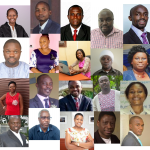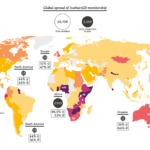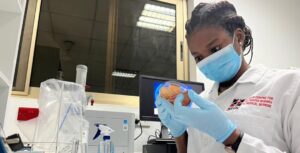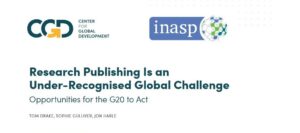
Three things we have learned about policy engagement
For research breakthroughs to make a difference to people’s lives they need to be discovered and used. For many years INASP has developed expertise in supporting researchers in communicating their research and in supporting policymakers to use research and evidence. In this post, Emily Hayter and Andy Nobes discuss what INASP has learnt about good approaches to bridging that gap.
At INASP we want to see research at the heart of development, and our strategy puts particular emphasis on equitable knowledge ecosystems. We work with researchers as well as with research users such as policymakers. A critical part of a strong national knowledge system is the relationship between these groups.
So what does this mean for our approach to policy engagement? We have been developing this over the last couple of years, drawing in particular on the wealth of experience in developing countries and on our insights from our work with actors across research systems. In this post we share some key lessons that we have learnt for policy engagement:
-
Policy engagement needs to build mutual understanding between researchers and policymakers as actors in a system (the ‘how’)
Our work with over 25,000 researchers around the world via the AuthorAID community gives us a good picture of the challenges faced by researchers, especially in developing countries. And our work with government agencies and parliaments has helped us understand the types of challenges research users face in finding and applying relevant research to address policy challenges.
Through this work, we know that the research/policy space is not quite the chasm it is often presented as, needing a ‘bridge’ to cross between two distinct groups. It is actually more of an interface, with lots of nuances and grey areas, and a wide range of brokering organisations. This is why we generally prefer to use the term ‘policy engagement’ (rather than the many other terms such as research uptake or policy influence), because it emphasises a two-way dialogue and collaboration.
Although the communication of research findings is a critical part of policy engagement, it is only one part of a wider process. And this wider process can often be an ongoing, messy, iterative collaborative process that researchers need to consider at the beginning of a research project. For effective policy engagement and collaboration between researchers and policymakers, we have learned it is important for them to be able to put themselves in each others’ shoes. In workshops like those recently held with organisations like European Union Joint Research Centre, Commonwealth Scholars Commission, Global Young Academy and universities we often use empathy mapping to facilitate this.
-
Strengthening productive collaboration (‘the what’)
Dialogue is a critical element of policy engagement, but policy engagement can and should go beyond this to co-create practical solutions— whether by teaming up to strengthen the evidence base of a climate change policy or collaboratively developing a national research agenda.
The most exciting opportunities are those which are founded on co-creation and which push the boundaries of both research and policy making.
We see policy engagement as part of a transdisciplinary research approach, fostering connections across academic disciplines and including the active participation of a wide range of stakeholders. For example, we have recently been involved in a project that brought together researchers, legislators, policymakers and practitioners in Northern Nigeria, to discuss the promotion of adolescent health in schools.
-
The research/policy interface is not a power-neutral space (the ‘who’)
We have increasingly been asking who is left out of the research/policy interface and why. INASP had, for a long time, focused on inequities between north and south, but in recent years we have been focusing more on inequities within and between southern research systems.
We are still learning more about these inequities—last year, we shared the results of our first Voices of Early Career Researchers survey; the next iteration is underway now and we look forward to sharing the results next year. Our initial consultations and observations from our work are starting to point us towards particular challenges experienced by specific groups such as women researchers, early-career researchers, and those who are based in ‘non apex’ institutions, i.e those which are based outside capital cities and are not seen as the preferred people to fund or access to networks of influence.
In preparation for AuthorAID’s new online course “Research Communication for Policy Engagement”, we conducted interviews to find out more about both the unique opportunities and the challenges faced by each of these groups in policy engagement. Our content is designed to reflect and engage with these realities.
Where next?
We want to continue to improve our understanding of the power dynamics active at the research/policy interface. Whose voices get heard, and why? And how can we at INASP support an inclusive, equitable dialogue between researchers and policymakers? These are some of the questions we are asking our stakeholders and collaborators—for instance in a recent conversation convened by the Africa Evidence Network.
We are also keen to keep working with innovative research projects to support equitable, transdisciplinary approaches to uptake and engagement.
With growing research and higher education systems in many countries, and greater expectations that their work is relevant to society, we think the best way we can contribute to this effort is to work with researchers in universities and research institutes, to help them to engage better with those in policy and practice, and to partner with colleagues in networks like Africa Evidence Network as we do so.
As we do that, we think digital technologies can play a particular role. They can increase the reach of this work and support this kind of learning at greater scale. And digital technologies can also create new opportunities for peers to learn and collaborate across institutions and across countries. Equity and inclusion will continue to be at the heart of that, to ensure new voices and ideas are brought to bear.

 Previous Post
Previous Post Next Post
Next Post


